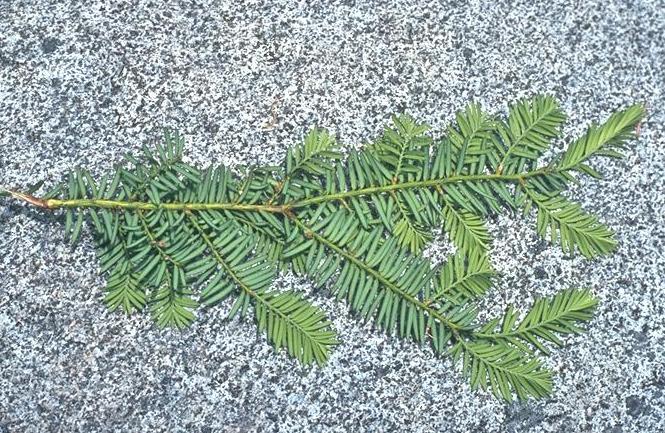
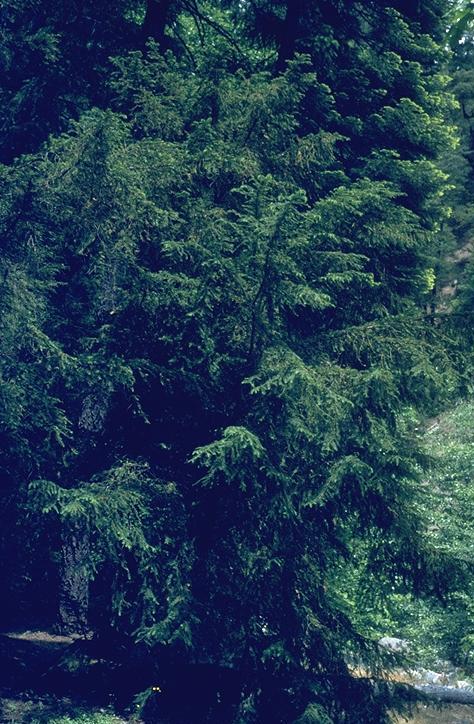
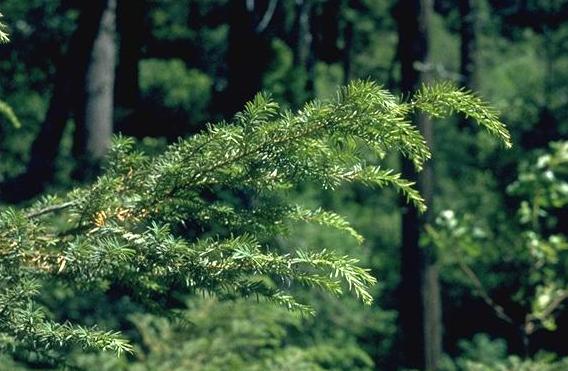
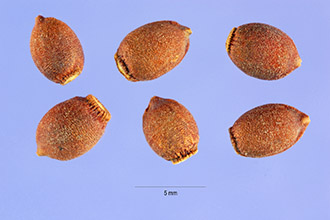
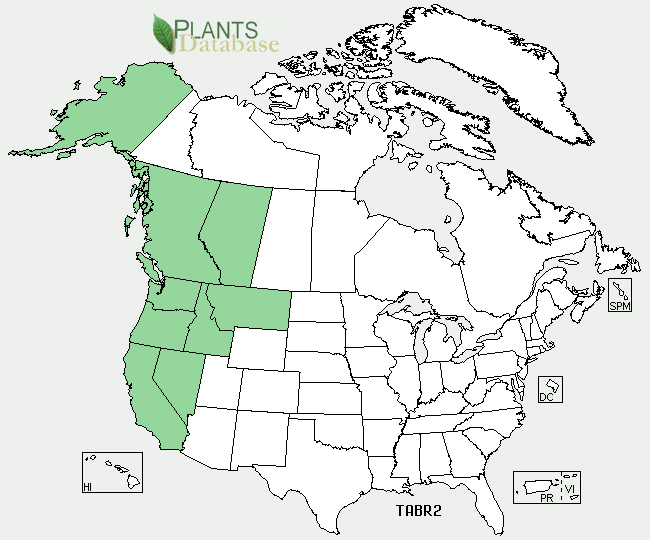
Seeds are greenish, small, mature in one season and require cold stratification. Pacific Yew needles are .5-1 inch long, dark green on top and lighter with two grayish bands running the length on the underside. The needles have compounds that inhibit plants from growing underneath it. The root system is shallow (36 inches), fibrous and spreading.
Photo citation: ©1995 Saint Mary's College of California
Photo citation: ©1995 Saint Mary's College of California
Photo citation: Steve Hurst @ USDA-NRCS PLANTS Database
Pacific Yew prefers moist forests with rich, well-draining, slightly acidic, medium textured soils. It is an understory tree and is shade tolerant. Annual rainfall needs are between 24-60 inches but it is moderately drought tolerant. Lowest survivable temperature is -18°F and it needs 140 frost free days. Active growth period is spring and summer.
Brown felt blight, Herpotrichia junipari, is a disease risk. Additionally, when grown near Alaska Cedar, it can be infected and killed by Phytophthora lateris. It also has a habit of rotting from the inside, which creates hollows.
Pacific Yew wood is valued for its reddish color, hardness, durability, fine grain and workablity. Uses include cabinetry, carving and canoe paddles. It is particularly prized for bow making. Its bark is also the source of the anti-cancer agent taxol.
Pacific Yew wood is valued for its reddish color, hardness, durability, fine grain and workablity. Uses include cabinetry, carving and canoe paddles. It is particularly prized for bow making. Its bark is also the source of the anti-cancer agent taxol.
Pacific Yew (Taxus brevifolia Nutt.) is a long lived conifer in the Yew family. It usually grows between 20-40 feet, occasionally up to 75, and 1-2 feet in diameter. The bark is reddish purple and flakes off in irregular, thin patches. Flowers bloom in early summer, producing male and female cones on separate trees. Eventually, they develop into fleshy, red seed containing cups, or arils.
Areas of distribution:
United States:
Alaska
California
Idaho
Montana
Nevada
Oregon
Washington
Canada:
Albertia
British Columbia
United States:
Alaska
California
Idaho
Montana
Nevada
Oregon
Washington
Canada:
Albertia
British Columbia
Photo citation: ©1995 Saint Mary's College of California
Map courtesy USDA-NRCS PLANTS Database
Sources:
Trees of North America- A guide to field identification-a Golden Field Guide from St. Martin's Press © 2002 By C. Frank Brockman p.20
USDA, NRCS. 2011. The PLANTS Database (<http://plants.usda.gov/>, 22 August 2011). National Plant Data Team, Greensboro, NC 27401-4901 USA.
Trees of North America- A guide to field identification-a Golden Field Guide from St. Martin's Press © 2002 By C. Frank Brockman p.20
USDA, NRCS. 2011. The PLANTS Database (<http://plants.usda.gov/>, 22 August 2011). National Plant Data Team, Greensboro, NC 27401-4901 USA.